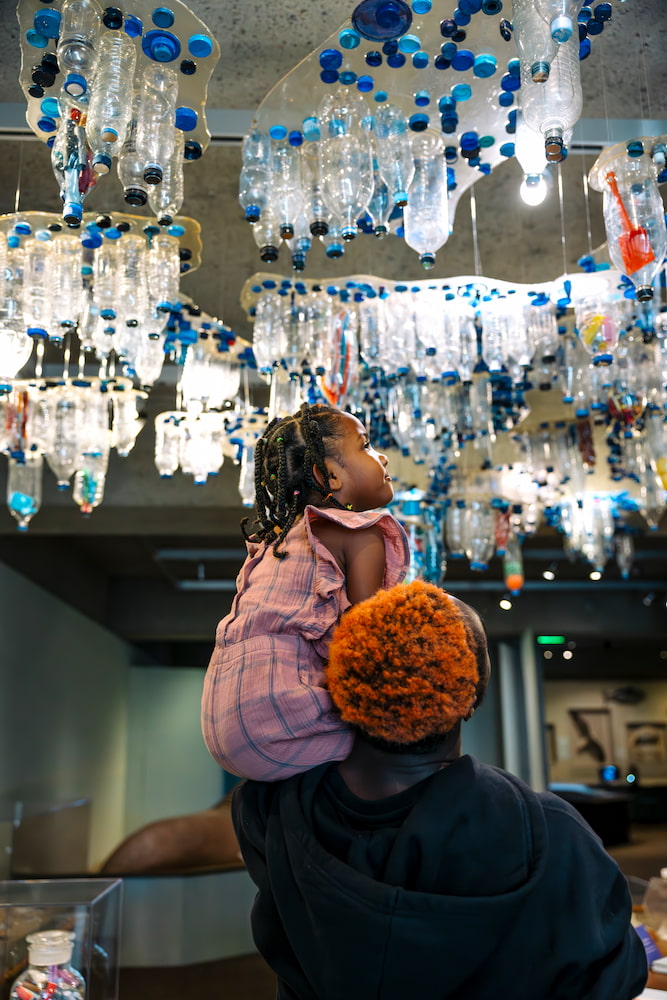Earth Day is April 22, and this year’s theme is Planet vs. Plastics.
Is it possible to be plastic-free? You may already know that plastic trash in the ocean is a huge problem for wildlife. Single-use plastics, like straws, bottle caps, and water bottles, make their way through storm drains to rivers and streams and then to the ocean. Much of that debris washes back up onto our beaches, but a large amount remains afloat where the wind and water break it into smaller pieces.
Here are the top 10 items that account for 80% of all garbage in our oceans.
- Cigarettes
- Bottle caps/lids
- Plastic bottled beverages
- Plastic bags
- Food wrappers and containers
- Eating utensils
- Glass bottles
- Straws/stirrers
- Beverage cans
- Paper bags
This month, we invite you to visit our Gallery of California Natural Sciences to learn more about the interaction between humans and the natural world. Hear from the voices of local community members and scientists, and discover how you can make a difference.

Judith Selby Lang and Richard Lang’s work, The Great Conveyor, represents the waste stream of single-use plastic caps and bottles found wayside in gutters, creeks, rivers, bays, oceans and on the beach. On the ceiling, The Great Conveyor represents the waste stream of single-use plastic caps and bottles found wayside in gutters, creeks, rivers, bays, oceans, and on the beach. Plastic caps of every color can be found in the “Rainbow Drawer.” Find bottles washed ashore from near and far away, from around the Pacific Rim, in the “Bottle Drawer.” In the “Apothecary Jars” you’ll see a few of the common items from our collection. Were any of these once yours?
Over the years, Selby and Lang collected pounds and pounds of plastic from one small stretch of Kehoe Beach in the Point Reyes National Seashore with the hope that their artwork can inspire others to take just one small action for the environment. They believe that together we all can make a world of difference.

